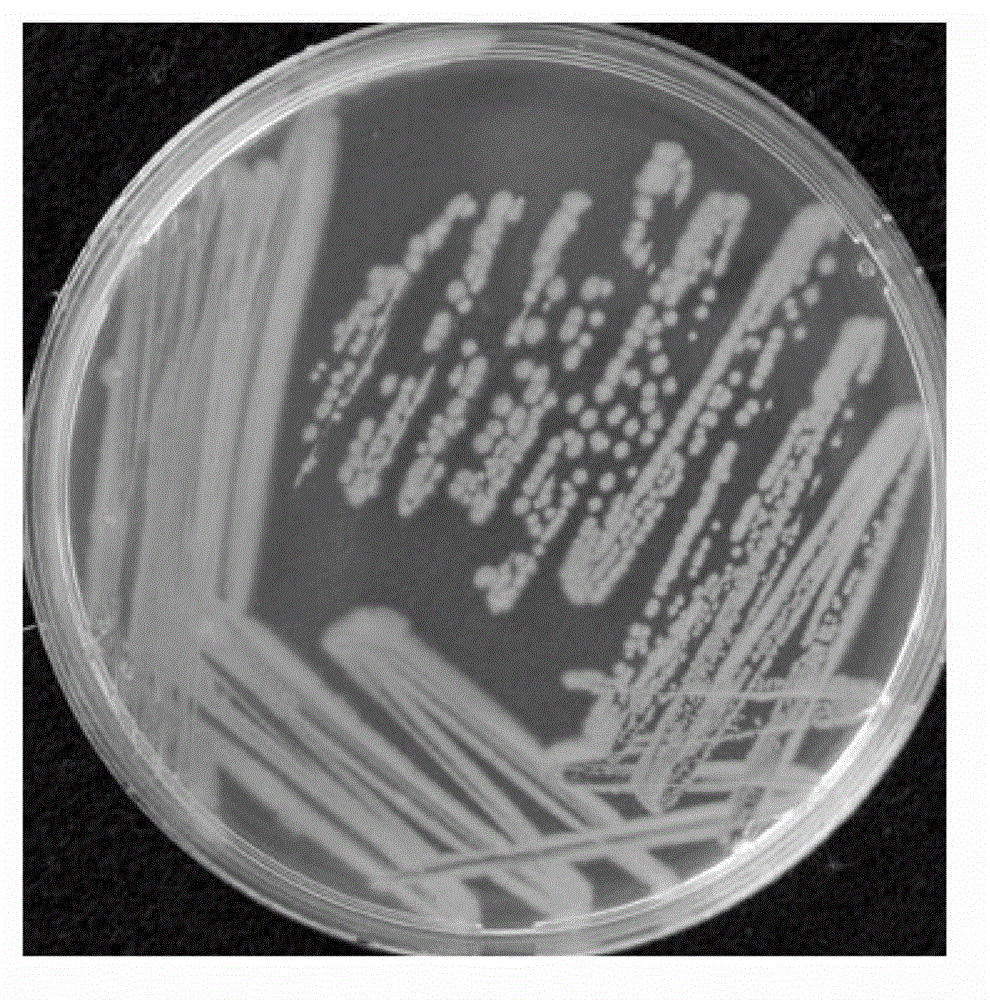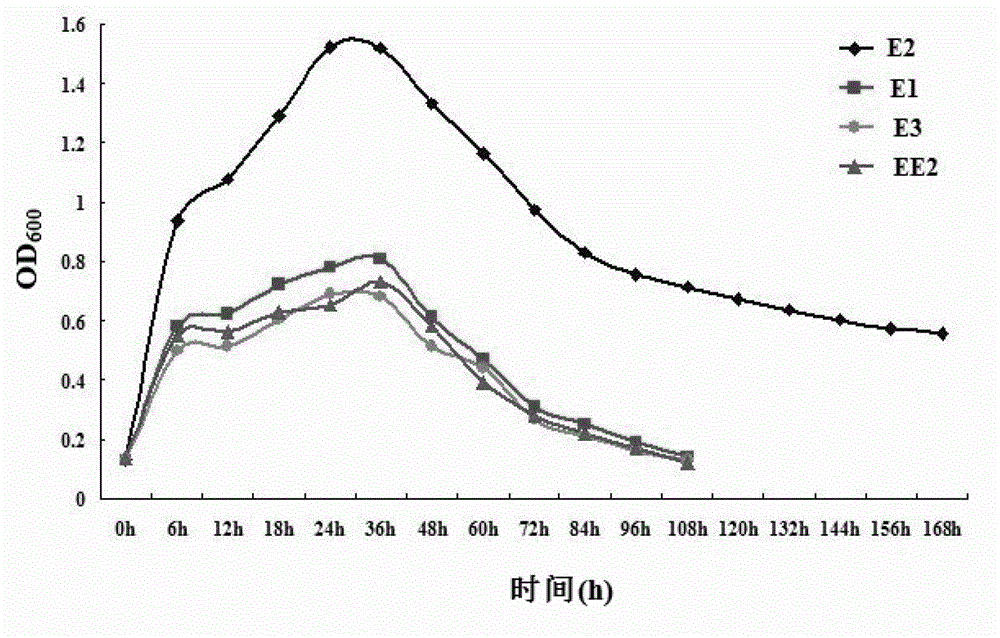Pseudomonas putida capable of efficiently degrading estrogen and acquisition and application thereof
A technology of Pseudomonas putida and estrogen, which is applied in the field of genetic engineering, can solve problems such as inability to support growth, degradation efficiency, degradation cycle and substrate preference differences, and affect degradation efficiency, so as to achieve improved efficiency and shortened degradation cycle Effect
- Summary
- Abstract
- Description
- Claims
- Application Information
AI Technical Summary
Problems solved by technology
Method used
Image
Examples
Embodiment Construction
[0027] The present invention will be further described below in conjunction with the examples, but the implementation of the present invention is not limited thereto. 1. Acquisition and preservation of Pseudomonasputida SJTE-1 strain
[0028]The activated sludge in the denitrification and phosphorus removal process system of the sewage treatment plant was collected as a microbial source, and transported back to the laboratory under refrigeration. Prepare an inorganic medium containing 50mg / L estrogen as the sole carbon source, and inoculate it in a 500mL Erlenmeyer flask containing 100mL of the above-mentioned inorganic medium according to the inoculum amount of 3% activated sludge. The inorganic components contained in the medium are: K 2 HPO 4 , 0.1g / L; (NH 4 ) 2 HPO 4 , 0.1g / L; MgSO 4 ·7H 2 O, 0.02g / L; FeCl 3 , 0.01g / L; CaCl 2 2H 2 O, 0.1g / L; NaCl, 0.1g / L; distilled water to 1000mL. Adjust the pH value to 7.0-7.2 with hydrochloric acid, and sterilize in an autocl...
PUM
 Login to View More
Login to View More Abstract
Description
Claims
Application Information
 Login to View More
Login to View More - R&D
- Intellectual Property
- Life Sciences
- Materials
- Tech Scout
- Unparalleled Data Quality
- Higher Quality Content
- 60% Fewer Hallucinations
Browse by: Latest US Patents, China's latest patents, Technical Efficacy Thesaurus, Application Domain, Technology Topic, Popular Technical Reports.
© 2025 PatSnap. All rights reserved.Legal|Privacy policy|Modern Slavery Act Transparency Statement|Sitemap|About US| Contact US: help@patsnap.com



